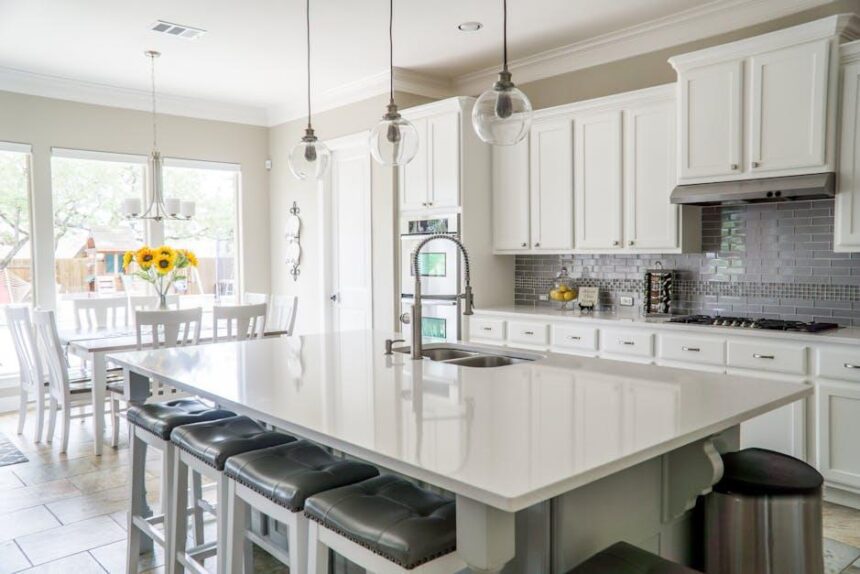In the quiet corners of our homes, where workspaces blend seamlessly with living spaces, light plays an often overlooked yet powerful role. Beyond merely illuminating a room, the quality and quantity of light can subtly shape our focus, energy, and mood. As remote work and home offices become fixtures of modern life, understanding how light influences productivity is more important than ever. This article explores the nuanced relationship between light and work efficiency at home, shedding light-quite literally-on the ways our environment can enhance or hinder our daily performance.
The Science Behind Light and Cognitive Performance

Light plays a pivotal role in regulating our brain function and overall cognitive performance. Exposure to natural light influences the production of melatonin-the hormone responsible for our sleep-wake cycles-helping us stay alert and focused during daylight hours. Bright, cool-toned light stimulates the brain’s alertness centers, enhancing attention, reaction time, and memory recall. Conversely, dim or warm-toned light can induce relaxation, which may hinder productivity when tasks demand intense concentration. Understanding this biological mechanism enables individuals to tailor their home lighting to match their daily energy peaks and cognitive needs.
- Blue-enriched light: Boosts alertness and mental clarity.
- Warm white light: Promotes relaxation but may reduce focus.
- Natural daylight: Best for sustained cognitive performance and mood stabilization.
| Light Type | Cognitive Effect | Best Use Time |
|---|---|---|
| Bright Blue-enriched | Increases alertness | Morning and early afternoon |
| Warm White | Encourages calmness | Late afternoon and evening |
| Natural Daylight | Enhances focus and mood | All daylight hours |
Optimizing Natural and Artificial Light for Home Workspaces

Creating the perfect balance between natural and artificial light can significantly enhance focus and efficiency in your home workspace. Embracing natural light not only replenishes your energy but also improves mood by regulating your body’s circadian rhythms. Position your desk near windows when possible and use sheer curtains to soften harsh sunlight without diminishing brightness. During darker hours, choose light sources that mimic daylight to maintain alertness without straining your eyes.
Consider these practical tips to optimize your workspace lighting:
- Layer light sources: Combine ambient, task, and accent lighting to reduce shadows and glare.
- Adjust color temperature: Cool white lights (5000K-6500K) boost concentration, while warmer tones (2700K-3000K) create calm during breaks.
- Use adjustable lamps: Directional lighting helps target specific areas, reducing eye fatigue.
- Reduce screen glare: Position lights to avoid reflections on monitors.
| Light Type | Best Use | Effect on Productivity |
|---|---|---|
| Natural Light | Daytime work | Enhances mood and focus |
| Cool LED | Task lighting | Improves alertness |
| Warm LED | Break and relaxation | Reduces stress |
Balancing Brightness and Color Temperature to Boost Focus

Finding the perfect harmony between brightness and color temperature is essential when shaping a productive home workspace. While intense brightness may stimulate alertness, too much can cause glare and fatigue. Conversely, dim lighting reduces eye strain but may dampen focus and motivation. Striking a balance means adjusting your lighting setup to deliver enough light to visually engage without overwhelming your senses. Incorporate adjustable lamps or smart bulbs that allow you to tweak both brightness levels and color warmth throughout the day, adapting to your natural rhythms and tasks at hand.
Color temperature plays a subtle yet powerful role in how your brain processes work. Cooler, bluish tones around 5000K to 6500K enhance concentration and simulate daylight, making them ideal for reading or technical tasks. Warmer hues near 2700K foster relaxation and creativity, perfect for brainstorming or winding down. Consider organizing your lighting as follows:
- Morning to mid-day: Shift to cooler temperatures with moderate brightness to jumpstart alertness.
- Afternoon: Use natural light or a neutral white to maintain comfort without causing fatigue.
- Evening: Opt for warmer, softer lights with reduced intensity to encourage calm and limit disruption to your circadian rhythm.
| Time of Day | Recommended Brightness | Ideal Color Temperature |
|---|---|---|
| Morning | 500-700 lux | 6000K (Cool White) |
| Afternoon | 400-600 lux | 4000K (Neutral White) |
| Evening | 200-300 lux | 2700K (Warm White) |
Practical Tips for Creating a Light-Friendly Productivity Environment

To harness the power of light effectively, consider positioning your workspace near natural light sources. Natural daylight not only boosts mood but also enhances concentration and reduces eye strain. If natural light isn’t abundant, opt for full-spectrum bulbs that mimic daylight’s color temperature. Incorporate adjustable lighting options to control brightness throughout the day, helping you maintain energy levels during afternoon slumps or late-night tasks. Remember, warm light works best for relaxation, while cooler light supports focus and alertness.
Balancing ambient and task lighting creates an optimal atmosphere for productivity. Use desk lamps with directed beams to illuminate your work area without causing glare. Complement these with softer ambient light to reduce harsh contrasts that can tire your eyes. Below is a simple guide to lighting types and their ideal uses:
| Lighting Type | Best For | Color Temperature |
|---|---|---|
| Natural Light | Boosting mood & alertness | 5000K-6500K |
| Cool White LED | Detailed tasks & focus | 4000K-5000K |
| Warm White LED | Relaxation & winding down | 2700K-3000K |
- Use sheer curtains to soften harsh sunlight without dimming your space completely.
- Position screens to minimize glare and reflections.
- Experiment with smart bulbs for customizable lighting schedules.
The Way Forward
In the intricate dance between light and human focus, the way we illuminate our homes shapes not just our spaces, but the very rhythm of our workdays. Harnessing natural light, balancing brightness, and choosing the right hues can transform a simple room into a productivity powerhouse. As we become more mindful of these subtle yet powerful influences, we unlock the potential to craft environments where creativity and efficiency thrive hand in hand. Ultimately, understanding light is not just about brightness-it’s about illuminating the path to our best work.














